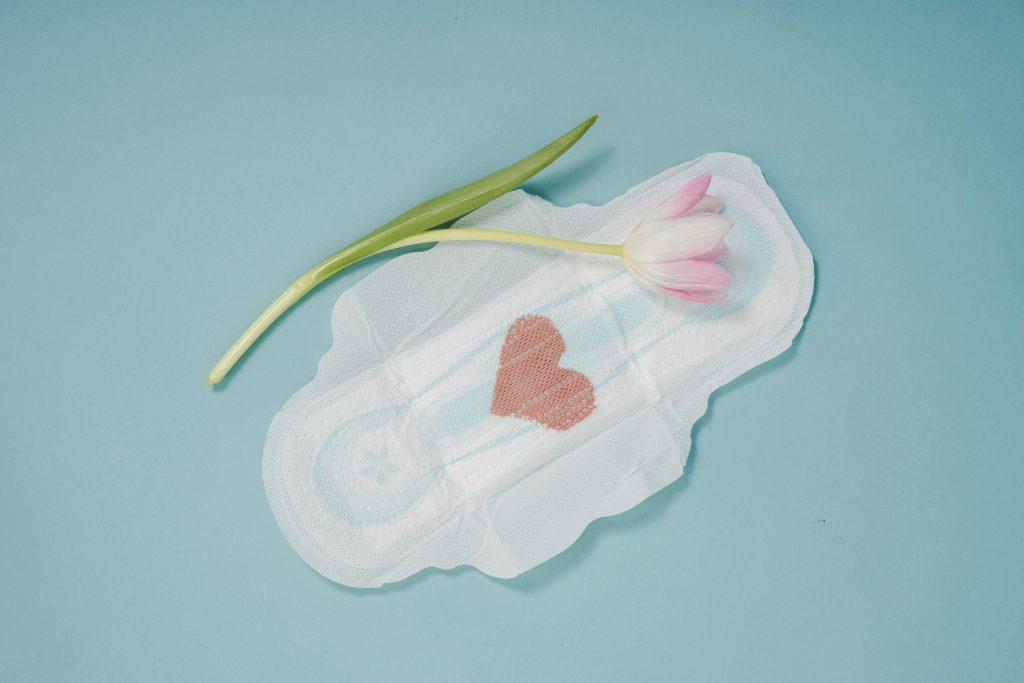Disclaimer: Mladysrecords. This site provides fashion and lifestyle content for informational purposes only.
Pink spotting between periods can be confusing and even alarming for many women. Whether you’ve noticed a few pink streaks on toilet paper or light staining in your underwear, you might wonder what it means and whether it’s a cause for concern.
In this comprehensive guide, we’ll dive deep into the world of pink spotting—what it is, why it happens, when it’s normal, and when you should seek medical advice. We’ll also share practical tips to track and manage pink spotting for your peace of mind.
- What Is Pink Spotting?
- Is Pink Spotting Between Periods Normal?
- Why Am I Experiencing Pink Spotting Between Periods?
- When Should I Be Concerned About Pink Spotting?
- When to Seek Immediate Medical Care
- How Is Pink Spotting Diagnosed?
- Can Stress or Lifestyle Changes Cause Pink Spotting?
- Can Dehydration or Diet Affect Pink Spotting?
- Could Exercise Habits Play a Role?
- How Can I Track and Manage Pink Spotting?
- Are There Natural Remedies to Support Cycle Health?
- In Summary
What Is Pink Spotting?
Pink spotting refers to light vaginal bleeding that is pale pink in color. This typically happens when a small amount of blood mixes with vaginal discharge or cervical mucus, giving it a diluted pink appearance. Unlike the heavier red bleeding seen during menstruation, pink spotting tends to be much lighter and often appears as:
- Light streaks on toilet paper after wiping.
- Small spots or stains in underwear.
- Pink-tinged mucus or vaginal discharge.
It’s essential to understand that pink spotting is not the same as a full menstrual period. It can happen at any point in the cycle, from ovulation to implantation, or even due to hormonal fluctuations or external factors like stress.
Is Pink Spotting Between Periods Normal?
Many women experience occasional pink spotting between periods, and in many cases, it’s perfectly normal. Here’s why:
- Hormonal fluctuations: The menstrual cycle is regulated by hormones such as estrogen and progesterone. Minor imbalances, especially around ovulation or before a period, can cause light spotting.
- Ovulation spotting: When an egg is released mid-cycle (around day 14 in a 28-day cycle), some women may notice pink spotting for a day or two.
- Pregnancy-related spotting: Implantation bleeding can cause light pink spotting when a fertilized egg attaches to the uterine lining. This usually occurs around 6-12 days after ovulation.
- Lifestyle changes: Stress, travel, intense exercise, and weight fluctuations can disrupt hormonal balance, leading to spotting.
While these causes are generally harmless, persistent, heavy, or painful pink spotting could indicate an underlying issue requiring medical evaluation.
Why Am I Experiencing Pink Spotting Between Periods?

Let’s dive deeper into the possible causes of pink spotting between periods.
1. Ovulation-Related Spotting
Ovulation spotting occurs in about 5-10% of women and is usually caused by a sudden surge in luteinizing hormone (LH), which can slightly disrupt the uterine lining. Signs include:
- Occurs roughly mid-cycle (days 12-16).
- Lasts 1-2 days and is typically light.
- Accompanied by mild cramps or increased cervical mucus.
If you’re tracking ovulation for fertility, pink spotting can actually be a helpful sign indicating your fertile window.
2. Hormonal Imbalances
Hormonal shifts are one of the most common reasons for spotting between periods. Factors that can disrupt hormone levels include:
- Polycystic ovary syndrome (PCOS), which causes irregular ovulation and spotting.
- Thyroid disorders, where either an underactive or overactive thyroid affects menstrual regularity.
- Perimenopause, the transition period before menopause, when hormone levels fluctuate unpredictably.
Spotting related to hormonal imbalances is often accompanied by irregular periods, missed cycles, acne, or unwanted hair growth.
3. Pregnancy-Related Causes
Light pink spotting may occur in early pregnancy due to:
- Implantation bleeding, when the embryo embeds into the uterine lining. This typically happens 6-12 days after ovulation, often before a missed period.
- Cervical changes during pregnancy, as increased blood flow to the cervix can cause light spotting after intercourse or pelvic exams.
- Early pregnancy complications, such as miscarriage or ectopic pregnancy, which may present with spotting, sharp abdominal pain, dizziness, or heavy bleeding. Always seek immediate medical attention if these occur.
4. Birth Control and Medications
Hormonal contraceptives, including pills, patches, IUDs, and implants, can cause breakthrough bleeding, especially during the first few months of use. Common causes include:
- Missed or delayed pills, leading to hormone fluctuations.
- Low-dose birth control, which may not provide enough estrogen to stabilize the endometrium.
- IUD irritation, particularly with copper or hormonal IUDs.
If pink spotting is persistent after months of consistent use, consult your doctor to evaluate your contraceptive method.
5. Infections or Inflammation
Pink spotting may also result from vaginal or cervical infections or inflammatory conditions:
- Bacterial vaginosis (BV) or yeast infections can irritate the vaginal lining, causing light spotting with itching or odor.
- Cervicitis (inflammation of the cervix) may cause spotting, especially after intercourse.
- STIs like chlamydia, gonorrhea, or trichomoniasis can result in pink spotting, often accompanied by unusual discharge or pelvic discomfort.
If you notice foul-smelling discharge, burning, or pelvic pain, seek medical evaluation for infections.
6. Physical Trauma or Irritation
Physical irritation from:
- Vigorous intercourse, which may cause microtears in the vaginal or cervical tissue.
- Pelvic exams or Pap smears, which can lead to minor bleeding.
In these cases, the spotting should resolve within a day or two.
7. Serious Causes (Less Common but Important)
In rare cases, pink spotting may indicate more serious conditions:
- Uterine fibroids or polyps, benign growths that disrupt the uterine lining.
- Endometrial hyperplasia, where the lining thickens excessively, increasing the risk of cancer.
- Cervical or uterine cancer, especially if spotting occurs after menopause or is persistent and accompanied by pain or weight loss.
When Should I Be Concerned About Pink Spotting?
Here are warning signs to watch for:
- Heavy, persistent bleeding soaking through pads or tampons.
- Severe abdominal or pelvic pain.
- Foul-smelling discharge, fever, or chills.
- Spotting after menopause, which may signal endometrial or cervical issues.
- Frequent spotting that disrupts your cycle.
If you experience these symptoms, don’t wait—schedule a medical appointment. Early evaluation can rule out serious conditions.
When to Seek Immediate Medical Care
- Severe abdominal pain or cramping.
- Heavy bleeding soaking through pads every hour.
- Dizziness, fainting, or rapid heartbeat.
- Positive pregnancy test with spotting.
- Postmenopausal spotting.
How Is Pink Spotting Diagnosed?
If you visit a healthcare provider, expect:
- A pelvic exam to check for infections or cervical changes.
- Blood tests for hormone levels and thyroid function.
- An ultrasound to examine the uterus, ovaries, and endometrium.
- A Pap smear or HPV test if cervical cancer is suspected.
Early diagnosis ensures appropriate treatment.
Can Stress or Lifestyle Changes Cause Pink Spotting?
Yes! Stress and lifestyle changes can directly impact your cycle:
- High stress increases cortisol, which disrupts estrogen and progesterone balance.
- Rapid weight loss affects hormone production, potentially leading to pink spotting.
Can Dehydration or Diet Affect Pink Spotting?

Yes, your hydration and nutrition can subtly influence your menstrual cycle and vaginal health. While dehydration itself may not directly cause spotting, it can contribute to hormonal imbalances and vaginal dryness, making the tissue more prone to irritation. Here’s how:
- Dehydration reduces blood flow to reproductive organs and affects the quality of cervical mucus, which might make any spotting appear more pronounced.
- Poor diet, especially one low in essential nutrients like iron, B vitamins, and healthy fats, can disrupt hormone production. This imbalance may lead to pink spotting.
- Caffeine and alcohol in excess can contribute to dehydration and hormonal fluctuations, increasing the likelihood of spotting.
Maintaining good hydration and a balanced diet rich in whole foods can help support reproductive health and reduce irregular spotting.
Could Exercise Habits Play a Role?
Absolutely! While exercise is essential for overall health, excessive physical activity—especially high-intensity workouts or endurance sports—can affect your menstrual cycle and cause pink spotting:
- Intense exercise can lower estrogen levels, leading to a condition known as hypothalamic amenorrhea, where periods become irregular or stop altogether.
- Sudden changes in exercise routines can also disrupt hormonal balance, temporarily causing spotting.
- Women with low body fat percentages, such as dancers, gymnasts, or distance runners, may experience spotting due to decreased estrogen and progesterone levels.
To avoid these issues:
- Gradually increase exercise intensity.
- Ensure adequate caloric intake and nutrient support.
- Listen to your body—if spotting persists or your periods become irregular, consult a healthcare provider.
How Can I Track and Manage Pink Spotting?
Tracking your cycle can provide insights into your reproductive health. Here’s how:
- Use a menstrual tracking app to log dates, spotting occurrences, and symptoms.
- Record the color, consistency, and duration of spotting.
- Note accompanying factors like stress levels, exercise, travel, or medication changes.
Helpful tips:
- Stay hydrated and eat balanced meals to support hormone production.
- Use panty liners to stay comfortable during spotting.
- Avoid douching or using harsh soaps, which can disrupt vaginal pH and increase irritation.
Are There Natural Remedies to Support Cycle Health?
While medical evaluation is crucial for persistent or unexplained pink spotting, some women find natural remedies helpful for maintaining hormonal balance and reducing spotting. Here are a few gentle, natural approaches:
- Herbal supplements like vitex (chasteberry) and Maca root may help regulate menstrual cycles, though it’s essential to consult your doctor before starting any supplements.
- Seed cycling, which involves consuming specific seeds (flax, pumpkin, sunflower, sesame) during different phases of the menstrual cycle, is believed by some to support hormone regulation.
- Stress management techniques such as yoga, meditation, and acupuncture can help balance stress hormones, indirectly supporting cycle health.
- Proper hydration and a whole-foods diet with plenty of leafy greens, healthy fats, and iron-rich foods support reproductive health and help prevent spotting.
Remember, natural remedies should complement—not replace—medical care. If spotting is persistent or accompanied by other symptoms, seek professional evaluation.
In Summary
Pink spotting between periods is often harmless and related to normal hormonal fluctuations, ovulation, or minor physical irritations. However, it’s essential to pay attention to your body and recognize when spotting may signal something more serious.
By tracking your cycle, reducing stress, and seeking timely medical advice, you can maintain your reproductive health and find peace of mind.

